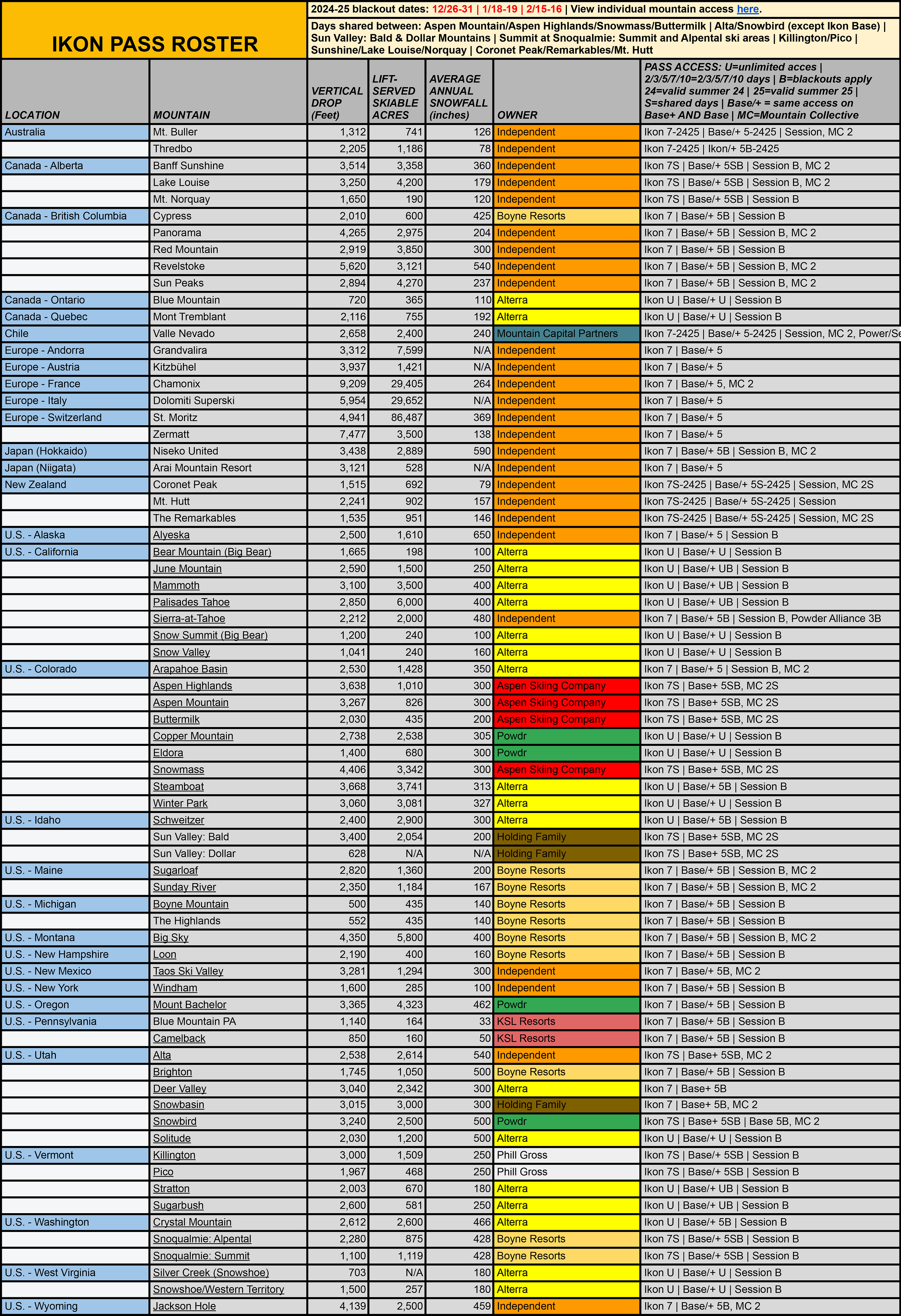Ikon Pass, Skiing’s Dinosaur King, Settles in for Long Reign
How Ikon got here, and how to make it better | 2024-25 season preview, part 4
Super teams always crack in the end. America and Russia win a World War and spend the next 80 years with nukes aimed at one another across the oceans. The 2004 Kobe-Shaq-Payton-Malone-Phil-Jackson-led Lakers are surefire title favorites until the no-name Pistons wipe them out of the Finals, smashing their dynasty in the process. Dinosaurs wander around stepping on fools for 140 million years before an asteroid says “Step on this, Suckas!”
I don’t know how long the Ikon Pass will last. My guess is less than 140 million years. But right now, as we enter season seven, the pass, which has never lost a partner, stands as the king of mega ski passes, offering the greatest mountain roster ever assembled (view full database here; best viewed on desktop):
Since launching into the 2018-19 ski season with 49 ski areas, the Alterra-owned Ikon Pass has added an average of three new partners per season, 22 total (this season’s additions are Sierra-at-Tahoe, California and St. Moritz, Switzerland). Alterra has flexed access with the market, managing skier traffic by tier-shifting mountains such as Crystal or introducing the Base Plus pass as a redoubt for Jackson-Aspen-level aspirationals:
The Ikon Pass isn’t perfect. It’s expensive and polarizing. The day-use Session Pass is the fruitcake of ski passes – a thing so bad that it’s hard to believe anyone would consume it. The go-big or go-humongous roster means a lot of avid skiers will have to supplement their habit with a local pass.
On Wednesday, I broke down 2024 multimountain pass membership growth as a whole. The major U.S.-based ski pass coalitions added 61 new partners this year. Indy Pass alone accounted for 48 of them, and ski areas outside the U.S. accounted for more additions than domestic resorts for the first time ever. Over the next several days, I’ll examine each pass individually, starting with Ikon, to analyze where it stands at the beginning of the 2024-25 ski season, what’s working, what could happen next, and where the product can improve for both skiers and ski areas.





